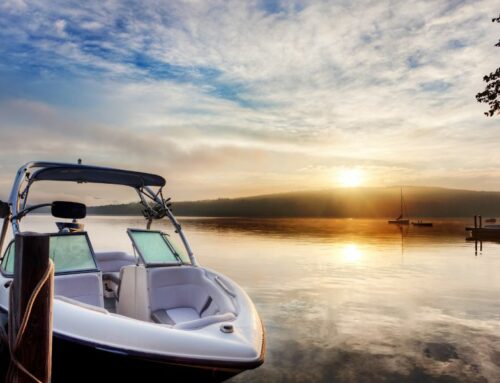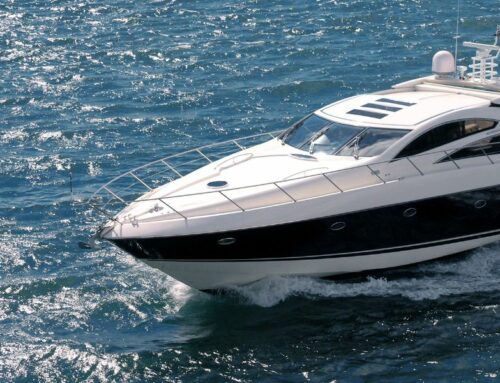Boat ownership is an exciting experience that offers endless opportunities for fun on the water with friends and loved ones. However, owning a boat isn’t all smooth sailing—serious care is required to maintain a well-performing, high-value vessel. As we move on from the winter months in favor of longer days and better boating conditions, it’s crucial that you understand appropriate marine vessel upkeep. With that, check out our ultimate guide to maintaining your boat this spring.
General Cleaning Practices
The most important and labor-intensive aspect of proper boat maintenance is regular cleaning. Luckily, it’s also the most affordable—simply stock up on the ideal cleaning products and equipment to ensure a happy and healthy vessel.
The Importance of Regular Cleaning Sessions
If boats are already in the water, then what’s the point in cleaning them? Anyone who’s ever spent time on a vessel probably knows the correct answer, but it’s essential that you understand the benefits of regular cleaning sessions. First and foremost, consistent cleaning practices like washing and removing marine debris help boost the longevity of your boat. Surprisingly, removing debris can actually impact your vessel’s performance on the water, further stressing the importance of these sessions. Additionally, the most common boat construction materials, like fiberglass and woodwork, already require routine maintenance and cleaning.
Cleaning Different Vessel Materials
Boats are not all made with the same components, but most of them feature a combination of the same three materials—wood, canvas, and fiberglass. Discover the proper cleaning methods for each of these materials below:
Woodwork
Wooden hulls and other significant elements are less common in modern vessels. However, some boats still utilize wooden parts by incorporating pieces of woodworking in the form of stairs, handrails, decks, and more. Most of these wooden elements are teak hardwood materials, and, as with many tropical tree species, teak is sensitive to abrasive and harsh cleaning products. Mild soap and soft cloths are suitable for removing dirt, debris, discolorations, and other imperfections in your boat’s woodwork. A special soft bristle brush is also recommended for maintaining the conditions of your teak grain.
Canvas
Canvas materials are often found in the cockpit or on the deck of your vessel, covering another marine element or piece of furniture. Like other marine construction materials, canvas loses its durability and natural water resistance when neglected. Use a specialty product to clean clear PVC canvas and mild soap for other canvas items.
Fiberglass
Fiberglass materials are incredibly lightweight and durable, making them ideal for any watercraft. Plus, most fiberglass vessels feature gel coatings that provide additional atmospheric and UV protection. Because of this protective glossy finish, it’s vital that you avoid using harsh and abrasive chemical cleaning products. Instead, use mild soaps, warm water, and soft sponges to wipe away dirt, grime, and debris on the fiberglass components. Furthermore, always finish your cleaning session by polishing the hull to seal in the shine and luster, and schedule a biannual wax coating session to reinforce and reinvigorate your fiberglass construction materials.
Marine Engine Considerations
Aside from proper cleaning practices, taking care of your marine engine is a significant responsibility. And, similar to regular cleaning sessions, engine care plays a massive role in the functionality and performance of your vessel.
Prioritizing Problematic Areas
Prioritizing the most problematic areas of your engine when conducting maintenance is the easiest way to simplify the entire process. Fuel tank vents are prone to complications and require regular inspections and cleanings. Ensure these vents are always open and unobstructed by removing dirt and debris before embarking on a trip. Another problematic engine element is the water intake—this area commonly fails due to debris buildup. Simply remove any obstructions from the water intake before starting your engine to guarantee a safer and more enjoyable on-water experience. And while not technically part of your engine, the propeller is another important marine component. Remove obstructions, such as caught fishing lines, waste, etc., and oil accumulation on or around your propeller with a proper scraping tool.
Flushing Your Marine Engine
Flushing your marine engine after each boating excursion helps eliminate sand, dirt, and other obstructions from the engine itself. Furthermore, it removes saltwater from the engine’s internal components, preventing salt buildup and corrosion in the lower unit. To properly flush your engine, you need an earmuff. This device is a motorized flushing attachment that goes over the water intake and pushes out dirty water as the engine and pump run; cold, high-pressure water is recommended when flushing a saltwater marine engine. After the earmuff completes its job, restart your engine and inspect the flow for weak outputs. If all is well, disconnect the fuel lines and continue to run the engine, burning off any remaining fuel in the carburetor.
Final Maintenance Checklist
With your engine taken care of, you’re almost done with your boat maintenance. However, it is essential that you address a few remaining areas of concern before embarking out on the water.
Spark Plugs
Marine engine spark plugs require an annual inspection, or an evaluation after 100 hours of operation. You must replace the spark plugs immediately if damages or complications are discovered. Furthermore, discarding and replacing spark plugs after 300 hours of operation is highly recommended, regardless of condition. Discoloration and oil buildup on electrodes and insulator tips indicate a faulty spark plug.
Oil Levels
Boats require oil checks at least three to four times yearly to ensure superior performance and longevity for your marine engine. Simply remove your engine’s cowling and place a marked dipstick inside, then remove the stick to see how much oil is still in your engine. Add more oil if the amount is below your preferred add line. You must avoid overfilling, which can significantly damage your vessel’s internal components and hinder overall performance.
Fuel Lines
Hydraulic fuel lines boast an impressive lifespan between 10 and 20 years. However, if you purchase a boat that’s over 10 years old and still has its original parts, you will want to replace the fuel lines. Leaks, misfires, and odors are all signs of damaged fuel lines—if you notice any of these issues, replace the faulty parts immediately.
Use our ultimate guide to maintaining your boat to ensure a successful and enjoyable on-water season this spring! Additionally, improve your boating experience by investing in high-performance hydraulic boat seats—contact our team at Smooth Moves to learn more about the benefits of advanced marine suspension systems.








